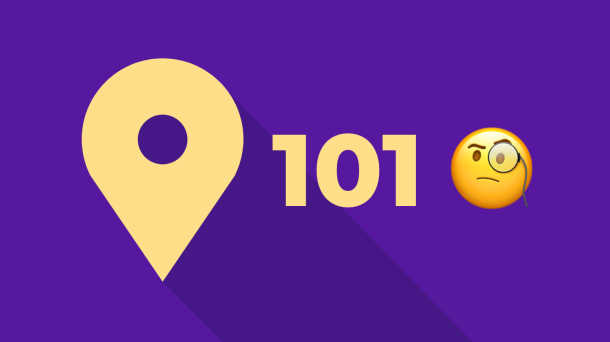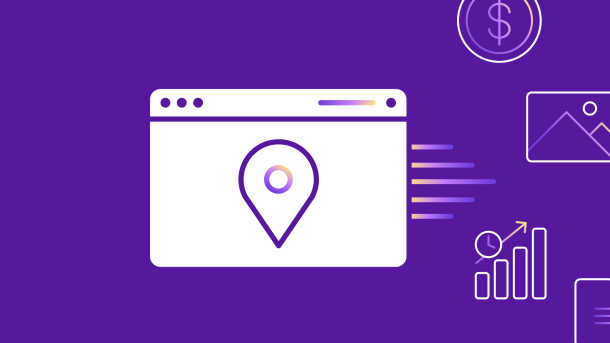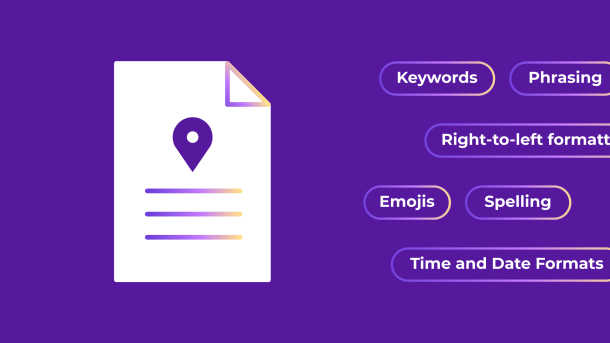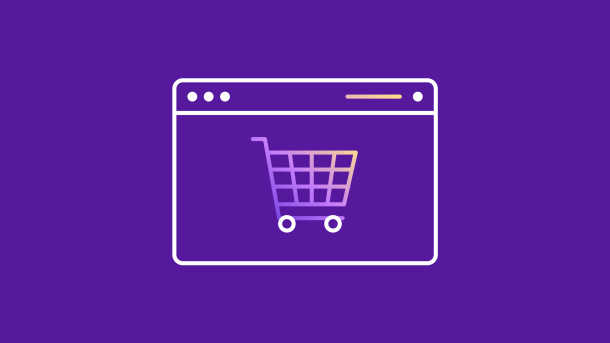In today's digital landscape, localized marketing strategies have become essential to businesses operating on a global scale.
Marketing localization refers to adapting a company's content to a specific locale and culture by translating it into the local language and ensuring cultural relevance.
By tailoring messages to each region’s culture and language, businesses can create content that resonates with local customers more authentically than generic campaigns do. Ultimately, it builds trust, reinforces an authentic brand image, and enables international expansion in a shorter period.
This guide will discuss the need for marketing localization, what you need to localize, how to localize your marketing collateral, how to localize a website, and what challenges you can expect.
Why do you need to localize your marketing collateral?
If you’re considering expansion in an international market, you need to understand how this might benefit you in the first place. Here are a few benefits of localizing your marketing materials:
Consumers prefer local products
The New Face of Local report found that 37% of customers still prefer to shop locally. Further, 20% shop online only when they can't find what they're looking for locally.
With this in mind, localization is necessary to nurture a feeling of affinity for products and keep your product top-of-mind for shoppers.
Customizing marketing materials to the local language, sentiment, seasonal trends, and cultural preferences will cater to your target audience’s needs. The idea is to provide customized content and language-specific touches that make customers feel appreciated and encouraged to shop with you. Doing so helps build customer loyalty and demonstrates that you’re a part of their community.
Reduces international expansion hurdles
Localization has revolutionized the chances of success for international expansion online.
Companies can now expand their digital presence to reach new audiences with such strategies. It makes entering new markets easier without sacrificing quality or time-to-market objectives.
Plus, shipping costs have become affordable, making it easy for businesses to deliver their products globally without the stress of price barriers.
Instead of waiting for physical expansion, they can expand digitally and reap the benefits.
Increased market share and engagement
When customers notice that you're speaking their language, it can show that you value and appreciate them as a part of your customer base. Not only does this attract more customers, but it also leads to higher sales, increasing your company's market share.
Ultimately, you’re building relationships with existing and potential customers, which pays off exponentially in the long run. Increased performance of marketing campaigns Localizing a product can be integral to successful marketing campaigns as it allows customers to personally connect with the brand’s message.
It encourages them to understand the language and subtleties of the campaign instead of potentially feeling alienated due to language or cultural differences.
For example, Coca-Cola’s “Share a Coke" campaign sold over 250 million bottles in a country of 23 million (Australia). They created an emotional campaign where they printed commonly found names in a country on their bottles and cans. This clicked with their audience, leading them to build affinity with the product and thus increasing sales.
What does marketing localization cover?
While most people think that localizing marketing materials means translating the website copy and leaving it at that, this couldn’t be farther from the truth.
All aspects of your marketing need to be localized—from your website to internal collateral to customer support.
Here’s a list of materials you need to consider during this process:
Website Translation
Marketing teams have realized the importance of website localization to entice their target audience. You need to ensure that the website is optimized for global and local variations of language or scripts used by users.
For example, Canva reached over 60 million active users by localizing their website in 130 languages. Below, you can see an example of their website copy in Kiswahili—a language spoken in Kenya.
You should also consider translating your landing pages and related PDF assets and documents. Imagine finding a French landing page for a promising research report, only for the report to be published in English. This leads to a disjointed and disappointing experience. Be sure to translate every connected asset.
Marketing and sales emails
Localization of email copy is a must for product sign-ups, customer onboarding, sales automation, and customer support.
By ensuring that customers receive information in their language of choice, you enhance their understanding of how a product works or what services are available. This creates a personalized customer experience, leading to increased engagement and better retention rates.
Blog posts
If you want to maximize your business's reach in another country, your blog should be available in multiple languages to increase exposure. It makes it easier for your target audience to find you.
When you make it accessible in multiple languages, you can ensure higher visibility and engagement from foreign markets within a shorter timeframe.
You can also employ transcreation techniques to create meaningful content with a localized flavor that accurately conveys the message regardless of location or audience. It ensures that localization is a continuous and automated process.
Marketing automation
You need to integrate your translation management system with marketing automation systems to ensure content is correctly localized and tailored to each customer's needs. It helps you optimize campaigns by targeting global audiences based on location or language preferences.
This practice ensures that the right assets are sent out to customers quickly and accurately. For example, Smartling integrates with tools like HubSpot, Salesforce Marketing Cloud, Marketo, and Oracle Eloqua. Knowledge base
Customers prefer to identify and implement solutions themselves without the need for customer service. A recent report found that as much as 60% of customers prefer solving issues on their own. That’s why you should translate your knowledge bases to accommodate customers who may not speak or understand English, a language that is prevalent on the internet.
For example, Lucidchart localized over 150+ marketing pages, including their knowledge base, to cater to their broad customer base.
Search engine optimization
A HubSpot report found that 50% of marketers say their company's SEO tactic is localization.
Strategically position key phrases and implement SEO strategies to optimize your website for visibility. When you have a localized site optimized for search engines, it helps search engine users from the target communities find your website.
Advertising copy
Localized advertising copy is key to driving customer conversions in any market. Translating that copy into the target language can significantly impact customer response and overall success.
It's essential to engage local translators who are adept not just in the language, but also in the culture of their location. They can capture nuances that may otherwise be lost in translation.
For example, the American Dairy Association printed an ad that was not just funny but was considered offensive too. As they were localizing for a Mexican audience, they translated their famous tagline “Got Milk” to Spanish. Unfortunately, it read as “Are You Lactating?” which was far from the intended message.
Plus, localizing the copy also ensures that messages remain consistent and on-brand through standardization across markets.
Common roadblocks while localizing marketing collaterals
As with any complex process, there are several roadblocks you can expect during the implementation process. Here are a few challenges you can expect while localizing marketing collateral:
Project management with multiple stakeholders
Having too many stakeholders involved in the localization process can cause more harm than good.
Andrew Noll, Digital Marketing Specialist at Virtuosity, says, "It's difficult to coordinate between all stakeholders. Large organizations sometimes over-complicate the process of localization. Too many stakeholders sharing feedback can be an issue in the process."
Approvals can be delayed when decisions depend on multiple departments with many contributing team members. This hindrance can result in slower time to market and missed goals that you could have achieved with fewer stakeholders involved and better internal coordination.
Ameet Mehta, Co-founder of Syndication Pro, says, "If you have multiple teams working on a single project, they tend to have different expectations of the scope of work. It can be quite a headache when you don't have a clear picture of what’s required to be done and who’s going to take the responsibility."
To avoid this, companies should rely on experts within the localization industry to hone in on strategies that’ll allow them to achieve international success. For example, you can use a translation management system like Smartling that helps you create specific workflows and assign content to it. Also, as it’s AI-enabled, you can automate tasks and monitor translation progress. With such efficiency, you can reduce your time to market by 42%.
Understanding different dialects and cultural nuances
Andrew adds, “I think that dialect is too often overlooked. A Spanish speaker, for instance, may not understand every dialect of Spanish. Translation should ideally be in a dialect that fits the region as well.”
Valerie Dehant, Senior Director of Language Services at Smartling, adds that references within your source copy may not work when localized. You need to be culturally sensitive while translating the copy.
To do this, you need to understand how different linguistic groups speak and how various cultures approach specific topics. Marketers can ensure that their copy resonates with each group in the manner they intend.
In doing so, localization allows content teams to optimize their messaging to build trust and engagement with users rather than alienating them, ultimately translating into improved performance across all regions.
Neglecting this key consideration will likely cause your campaigns to suffer. A lack of cultural sensitivity or thoughtful localization strategy can directly lead to poor performance.
Lack of time to localize the copy
Valerie notes, “You cannot expect your beautifully crafted English copy that took weeks to perfect through multiple rounds of revisions to be equally well crafted in your target language in a few days.”
The process involves much more than just translating words. From resource planning to localization testing, it requires thoughtful planning and scheduling to ensure the intended meaning is adequately conveyed when it reaches users.
Give ample development time for accuracy to maximize customer satisfaction levels and prevent any negative impact on brand image. It's best to consider this a part of your global marketing strategy.
Legal regulations in different markets
Matthew Ramirez, Founder of Rephrasely, says, "Laws and regulations are a challenge. The regulatory framework is often different from country to country. This means that our marketing materials must comply with local laws and regulations."
When marketing materials are localized for different audiences, it's crucial to research and comply with legal regulations.
Understanding the local regulations and ensuring that the copy adheres to those laws can be tedious. Still, it’s vital to do so to prevent any potential legal issues.
For example, Tiger Airways was fined $110,000 in Australia for violating the Spam Act, which requires them to honor unsubscribe requests when a customer asks for them. Similarly, if you're marketing in Muslim countries like those in the MENA region, you can’t showcase alcohol in your ads/marketing material.
Marketing localization: how to get started?
Now that you know the benefits and challenges of marketing localization, let's look at how to kickstart the process.
Identify the target market and required resources
First, you need to identify what your target market will be and what kind of languages they speak.
For example, if your business is based in the United States and you want to localize for European markets, research which languages are prevalent.
You can even use the four P's of marketing or the "marketing mix" to solidify the plan. Consider these elements first if you're launching a new go-to-market (GTM) strategy:
- Product: The product/service an organization offers to its target market (tangible and intangible)
- Place: How and where products will be made available to buyers, such as a store or website
- Price: The amount customers are willing to pay for the product or service, and it matters since it can influence demand and profitability
- Promotion: Strategies to inform customers about their products/services, including advertising, public relations, sales promotions, and direct marketing
Hone in on which markets to localize for and then identify what needs to be worked on and what resources you need.
Here’s what you’ll typically need for the localization process:
- Translators and copywriters: Native language experts who know the language, demographics, cultural nuances, and linguistic differences and can infuse region-specific language
- Translation management systems: To automate your localization process and ensure that the copy is translated as and when more source content is published
- Source material: Determine which marketing materials need to be translated on and off your website
- Project managers: To help keep the entire project on track and prevent overuse of allocated budget
- Allocated budget: Determine the budget for the process and ensure it’s allocated well to different phases of the process
- Translation style guide: This ensures that your brand’s messaging is accurate across all channels no matter which languages they’re localized for
- Translation glossary: This includes your company-approved translations and definitions of original terms, which acts as a reference
Translate, localize, and optimize your marketing collaterals
Once you know what you need, finalize a creative brief that'll guide the entire process. Valerie recommends always sharing the creative brief with your translators to help them understand the intent of your source content. It prevents them from getting sidetracked.
After you share the brief, ensure that translation and feedback are continuous. Instead of waiting for translators to finish their work, you can review the copy as it's being translated. Also, you need to localize other parts of your website like pricing, graphics, calls to action, terms of use/privacy policy, and more. Explore this guide to learn more about translating your marketing materials based on asset type.
Consider using a translation management system to manage the entire localization process in a centralized location. It helps you save time and resources while growing your business at scale.
Finally, you can optimize your digital copy for search engines in the target market. Use keywords that are culturally and topically relevant to rank higher in the search engine results for your target market.
Generate demand in your target market
Localization is a great way to ensure your message resonates with the target market. However, it can only be effective if you actively promote and create demand for your product or service among local customers.
To achieve this, businesses must hire local teams like influencers and marketers who understand their language, culture, and customs. It allows localization to be utilized to its fullest potential as customers will absorb the information in the most accurate form.
For example, Unbounce hired Ben Harmanus to handle their German, Swiss, and Austrian markets. By having a local brand ambassador, they were able to increase brand affinity and retention.
Beta test and monitor the performance
Brian David Crane, Founder and CEO of Spread Great Ideas, says, "The most overlooked part is beta-testing your localized marketing materials with users on the ground before you include the collaterals in your brand campaign. A good idea is to conduct regular customer interviews to analyze how the marketing collaterals are doing and to use the feedback to refine the messaging continuously.”
Apart from beta testing, you also need to monitor the copy's performance after launch. You can do this by A/B testing your copy and CTAs. In addition, cross-check relevant metrics across your drip campaigns, automation workflows, SEO performance, and more to determine if it's driving enough conversions.
This way, you can optimize materials to drive higher conversions and encourage customers to return, increasing customer lifetime value.
Localize your marketing with Smartling
Businesses of all sizes can benefit from marketing localization. By adapting your messaging and content to the specific cultural norms, values, and preferences of your target markets, you can boost ROI, build trust, and scale your business quickly and effectively.
If you’re ready to start localized marketing but aren’t sure where to begin, our team at Smartling is here to help. We offer expert guidance and cutting-edge technology that streamlines the entire process—from translation to delivery—so you can focus on driving results.
Book a demo with Smartling today and kickstart your marketing localization process.






